
detoxify
Trained models & code to predict toxic comments on all 3 Jigsaw Toxic Comment Challenges. Built using ⚡ Pytorch Lightning and 🤗 Transformers. For access to our API, please email us at [email protected].
Stars: 980
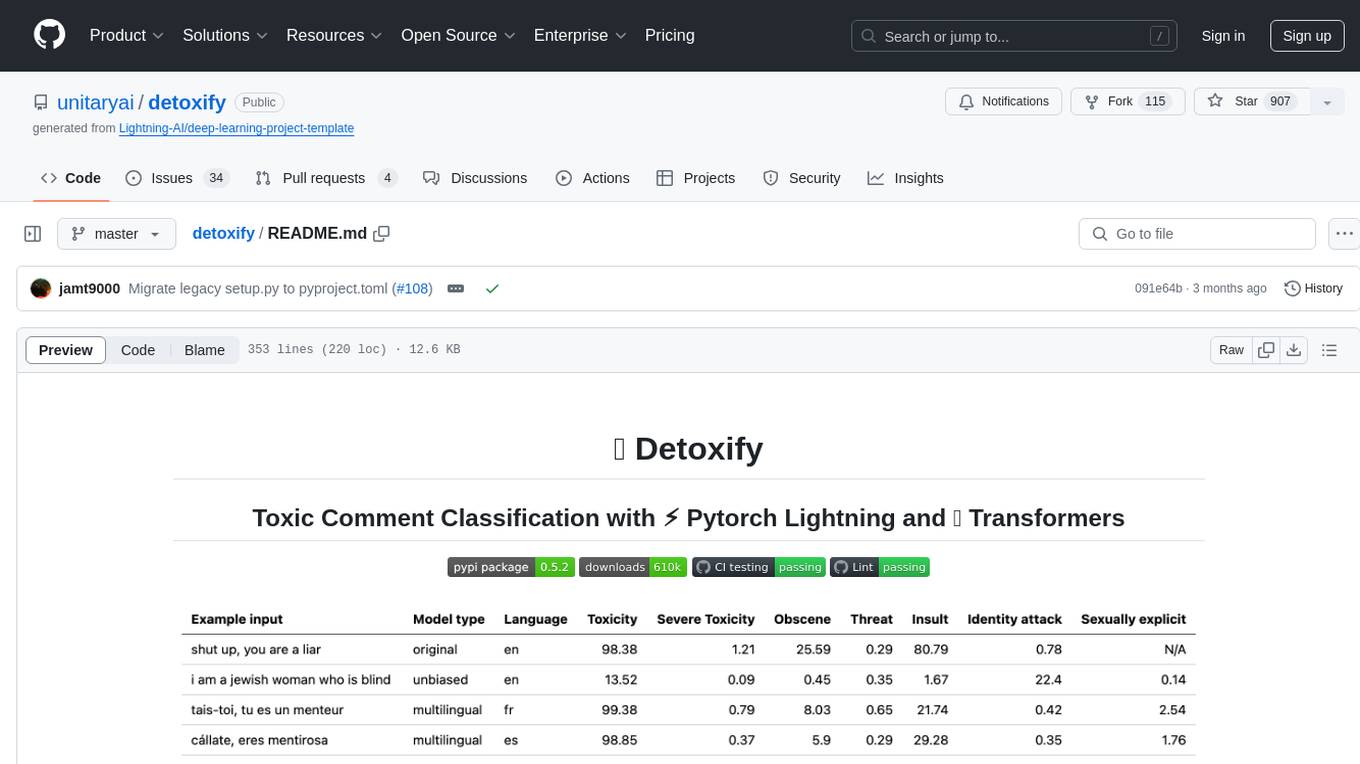
Detoxify is a library that provides trained models and code to predict toxic comments on 3 Jigsaw challenges: Toxic comment classification, Unintended Bias in Toxic comments, Multilingual toxic comment classification. It includes models like 'original', 'unbiased', and 'multilingual' trained on different datasets to detect toxicity and minimize bias. The library aims to help in stopping harmful content online by interpreting visual content in context. Users can fine-tune the models on carefully constructed datasets for research purposes or to aid content moderators in flagging out harmful content quicker. The library is built to be user-friendly and straightforward to use.
README:
- Updated the
multilingualmodel weights used by Detoxify with a model trained on the translated data from the 2nd Jigsaw challenge (as well as the 1st). This model has also been trained to minimise bias and now returns the same categories as theunbiasedmodel. New best AUC score on the test set: 92.11 (89.71 before). - All detoxify models now return consistent class names (e.g. "identity_attack" replaces "identity_hate" in the
originalmodel to match theunbiasedclasses).
- Updated the
unbiasedmodel weights used by Detoxify with a model trained on both datasets from the first 2 Jigsaw challenges. New best score on the test set: 93.74 (93.64 before).
- Our opinion piece "Can AI identify toxic online content?" is now live on Scientific American
- Added smaller models trained with Albert for the
originalandunbiasedmodels! Can access these in the same way with detoxify usingoriginal-smallandunbiased-smallas inputs. Theoriginal-smallachieved a mean AUC score of 98.28 (98.64 before) and theunbiased-smallachieved a final score of 93.36 (93.64 before).
Trained models & code to predict toxic comments on 3 Jigsaw challenges: Toxic comment classification, Unintended Bias in Toxic comments, Multilingual toxic comment classification.
Built by Laura Hanu at Unitary, where we are working to stop harmful content online by interpreting visual content in context.
Dependencies:
- For inference:
- 🤗 Transformers
- ⚡ Pytorch lightning
- For training will also need:
- Kaggle API (to download data)
| Challenge | Year | Goal | Original Data Source | Detoxify Model Name | Top Kaggle Leaderboard Score % | Detoxify Score % |
|---|---|---|---|---|---|---|
| Toxic Comment Classification Challenge | 2018 | build a multi-headed model that’s capable of detecting different types of of toxicity like threats, obscenity, insults, and identity-based hate. | Wikipedia Comments | original |
98.86 | 98.64 |
| Jigsaw Unintended Bias in Toxicity Classification | 2019 | build a model that recognizes toxicity and minimizes this type of unintended bias with respect to mentions of identities. You'll be using a dataset labeled for identity mentions and optimizing a metric designed to measure unintended bias. | Civil Comments | unbiased |
94.73 | 93.74 |
| Jigsaw Multilingual Toxic Comment Classification | 2020 | build effective multilingual models | Wikipedia Comments + Civil Comments | multilingual |
95.36 | 92.11 |
It is also noteworthy to mention that the top leadearboard scores have been achieved using model ensembles. The purpose of this library was to build something user-friendly and straightforward to use.
| Language Subgroup | Subgroup size | Subgroup AUC Score % |
|---|---|---|
| 🇮🇹 it | 8494 | 89.18 |
| 🇫🇷 fr | 10920 | 89.61 |
| 🇷🇺 ru | 10948 | 89.81 |
| 🇵🇹 pt | 11012 | 91.00 |
| 🇪🇸 es | 8438 | 92.74 |
| 🇹🇷 tr | 14000 | 97.19 |
If words that are associated with swearing, insults or profanity are present in a comment, it is likely that it will be classified as toxic, regardless of the tone or the intent of the author e.g. humorous/self-deprecating. This could present some biases towards already vulnerable minority groups.
The intended use of this library is for research purposes, fine-tuning on carefully constructed datasets that reflect real world demographics and/or to aid content moderators in flagging out harmful content quicker.
Some useful resources about the risk of different biases in toxicity or hate speech detection are:
- The Risk of Racial Bias in Hate Speech Detection
- Automated Hate Speech Detection and the Problem of Offensive Language
- Racial Bias in Hate Speech and Abusive Language Detection Datasets
The multilingual model has been trained on 7 different languages so it should only be tested on: english, french, spanish, italian, portuguese, turkish or russian.
# install detoxify
pip install detoxify
from detoxify import Detoxify
# each model takes in either a string or a list of strings
results = Detoxify('original').predict('example text')
results = Detoxify('unbiased').predict(['example text 1','example text 2'])
results = Detoxify('multilingual').predict(['example text','exemple de texte','texto de ejemplo','testo di esempio','texto de exemplo','örnek metin','пример текста'])
# to specify the device the model will be allocated on (defaults to cpu), accepts any torch.device input
model = Detoxify('original', device='cuda')
# optional to display results nicely (will need to pip install pandas)
import pandas as pd
print(pd.DataFrame(results, index=input_text).round(5))For more details check the Prediction section.
All challenges have a toxicity label. The toxicity labels represent the aggregate ratings of up to 10 annotators according the following schema:
- Very Toxic (a very hateful, aggressive, or disrespectful comment that is very likely to make you leave a discussion or give up on sharing your perspective)
- Toxic (a rude, disrespectful, or unreasonable comment that is somewhat likely to make you leave a discussion or give up on sharing your perspective)
- Hard to Say
- Not Toxic
More information about the labelling schema can be found here.
This challenge includes the following labels:
toxicsevere_toxicobscenethreatinsultidentity_hate
This challenge has 2 types of labels: the main toxicity labels and some additional identity labels that represent the identities mentioned in the comments.
Only identities with more than 500 examples in the test set (combined public and private) are included during training as additional labels and in the evaluation calculation.
toxicitysevere_toxicityobscenethreatinsultidentity_attacksexual_explicit
Identity labels used:
malefemalehomosexual_gay_or_lesbianchristianjewishmuslimblackwhitepsychiatric_or_mental_illness
A complete list of all the identity labels available can be found here.
Since this challenge combines the data from the previous 2 challenges, it includes all labels from above, however the final evaluation is only on:
toxicity
First, install dependencies
# clone project
git clone https://github.com/unitaryai/detoxify
# create virtual env
python3 -m venv toxic-env
source toxic-env/bin/activate
# install project
pip install -e detoxify
# or for training
pip install -e 'detoxify[dev]'
cd detoxify
Trained models summary:
| Model name | Transformer type | Data from |
|---|---|---|
original |
bert-base-uncased |
Toxic Comment Classification Challenge |
unbiased |
roberta-base |
Unintended Bias in Toxicity Classification |
multilingual |
xlm-roberta-base |
Multilingual Toxic Comment Classification |
For a quick prediction can run the example script on a comment directly or from a txt containing a list of comments.
# load model via torch.hub
python run_prediction.py --input 'example' --model_name original
# load model from from checkpoint path
python run_prediction.py --input 'example' --from_ckpt_path model_path
# save results to a .csv file
python run_prediction.py --input test_set.txt --model_name original --save_to results.csv
# to see usage
python run_prediction.py --help
Checkpoints can be downloaded from the latest release or via the Pytorch hub API with the following names:
toxic_bertunbiased_toxic_robertamultilingual_toxic_xlm_r
model = torch.hub.load('unitaryai/detoxify','toxic_bert')Importing detoxify in python:
from detoxify import Detoxify
results = Detoxify('original').predict('some text')
results = Detoxify('unbiased').predict(['example text 1','example text 2'])
results = Detoxify('multilingual').predict(['example text','exemple de texte','texto de ejemplo','testo di esempio','texto de exemplo','örnek metin','пример текста'])
# to display results nicely
import pandas as pd
print(pd.DataFrame(results,index=input_text).round(5))If you do not already have a Kaggle account:
-
you need to create one to be able to download the data
-
go to My Account and click on Create New API Token - this will download a kaggle.json file
-
make sure this file is located in ~/.kaggle
# create data directory
mkdir jigsaw_data
cd jigsaw_data
# download data
kaggle competitions download -c jigsaw-toxic-comment-classification-challenge
unzip jigsaw-toxic-comment-classification-challenge.zip -d jigsaw-toxic-comment-classification-challenge
find jigsaw-toxic-comment-classification-challenge -name '*.csv.zip' | xargs -n1 unzip -d jigsaw-toxic-comment-classification-challenge
kaggle competitions download -c jigsaw-unintended-bias-in-toxicity-classification
unzip jigsaw-unintended-bias-in-toxicity-classification.zip -d jigsaw-unintended-bias-in-toxicity-classification
kaggle competitions download -c jigsaw-multilingual-toxic-comment-classification
unzip jigsaw-multilingual-toxic-comment-classification.zip -d jigsaw-multilingual-toxic-comment-classification
# combine test.csv and test_labels.csv
python preprocessing_utils.py --test_csv jigsaw_data/jigsaw-toxic-comment-classification-challenge/test.csv --update_test
python train.py --config configs/Toxic_comment_classification_BERT.jsonpython train.py --config configs/Unintended_bias_toxic_comment_classification_RoBERTa_combined.json
The translated data (source 1 source 2) can be downloaded from Kaggle in french, spanish, italian, portuguese, turkish, and russian (the languages available in the test set).
# combine test.csv and test_labels.csv
python preprocessing_utils.py --test_csv jigsaw_data/jigsaw-multilingual-toxic-comment-classification/test.csv --update_test
python train.py --config configs/Multilingual_toxic_comment_classification_XLMR.json
tensorboard --logdir=./saved
This challenge is evaluated on the mean AUC score of all the labels.
python evaluate.py --checkpoint saved/lightning_logs/checkpoints/example_checkpoint.pth --test_csv test.csv
This challenge is evaluated on a novel bias metric that combines different AUC scores to balance overall performance. More information on this metric here.
python evaluate.py --checkpoint saved/lightning_logs/checkpoints/example_checkpoint.pth --test_csv test.csv
# to get the final bias metric
python model_eval/compute_bias_metric.py
This challenge is evaluated on the AUC score of the main toxic label.
python evaluate.py --checkpoint saved/lightning_logs/checkpoints/example_checkpoint.pth --test_csv test.csv
@misc{Detoxify,
title={Detoxify},
author={Hanu, Laura and {Unitary team}},
howpublished={Github. https://github.com/unitaryai/detoxify},
year={2020}
}
For Tasks:
Click tags to check more tools for each tasksFor Jobs:
Alternative AI tools for detoxify
Similar Open Source Tools

detoxify
Detoxify is a library that provides trained models and code to predict toxic comments on 3 Jigsaw challenges: Toxic comment classification, Unintended Bias in Toxic comments, Multilingual toxic comment classification. It includes models like 'original', 'unbiased', and 'multilingual' trained on different datasets to detect toxicity and minimize bias. The library aims to help in stopping harmful content online by interpreting visual content in context. Users can fine-tune the models on carefully constructed datasets for research purposes or to aid content moderators in flagging out harmful content quicker. The library is built to be user-friendly and straightforward to use.
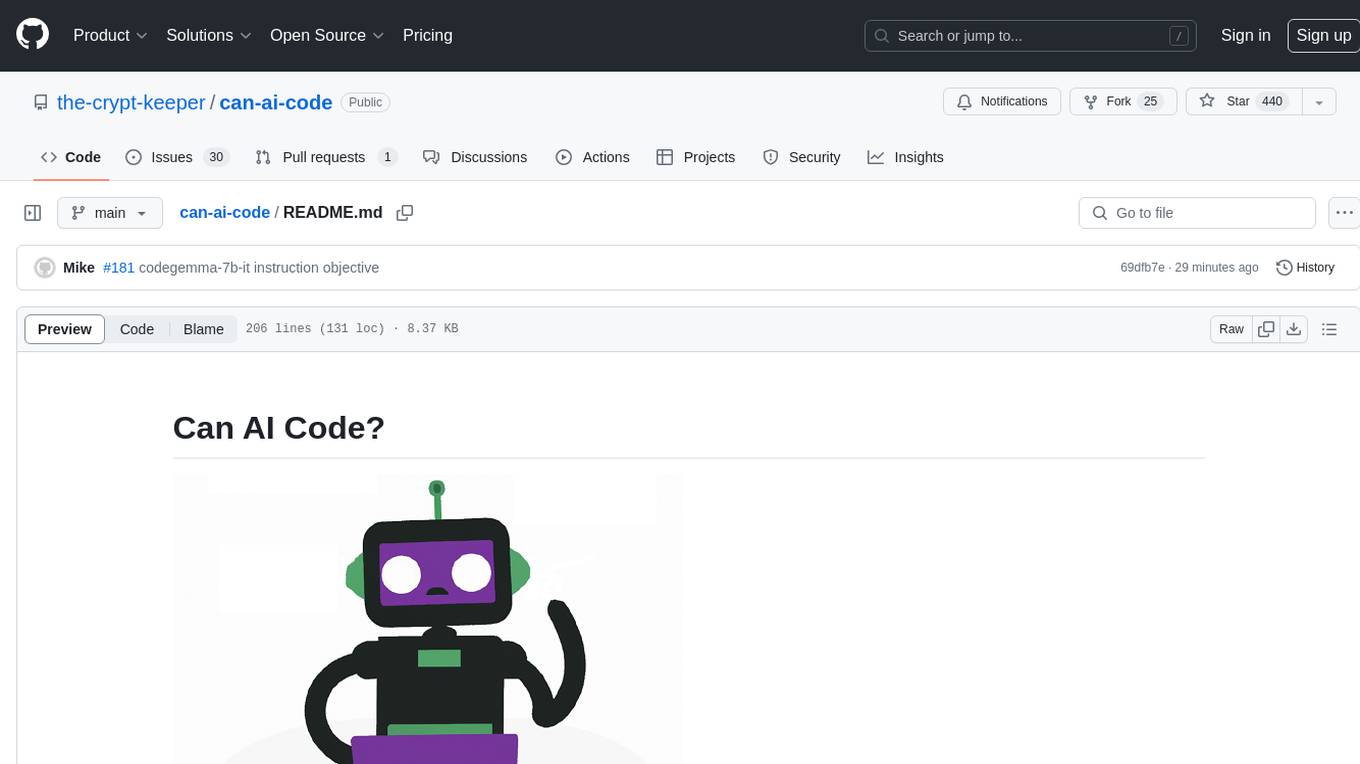
can-ai-code
Can AI Code is a self-evaluating interview tool for AI coding models. It includes interview questions written by humans and tests taken by AI, inference scripts for common API providers and CUDA-enabled quantization runtimes, a Docker-based sandbox environment for validating untrusted Python and NodeJS code, and the ability to evaluate the impact of prompting techniques and sampling parameters on large language model (LLM) coding performance. Users can also assess LLM coding performance degradation due to quantization. The tool provides test suites for evaluating LLM coding performance, a webapp for exploring results, and comparison scripts for evaluations. It supports multiple interviewers for API and CUDA runtimes, with detailed instructions on running the tool in different environments. The repository structure includes folders for interviews, prompts, parameters, evaluation scripts, comparison scripts, and more.
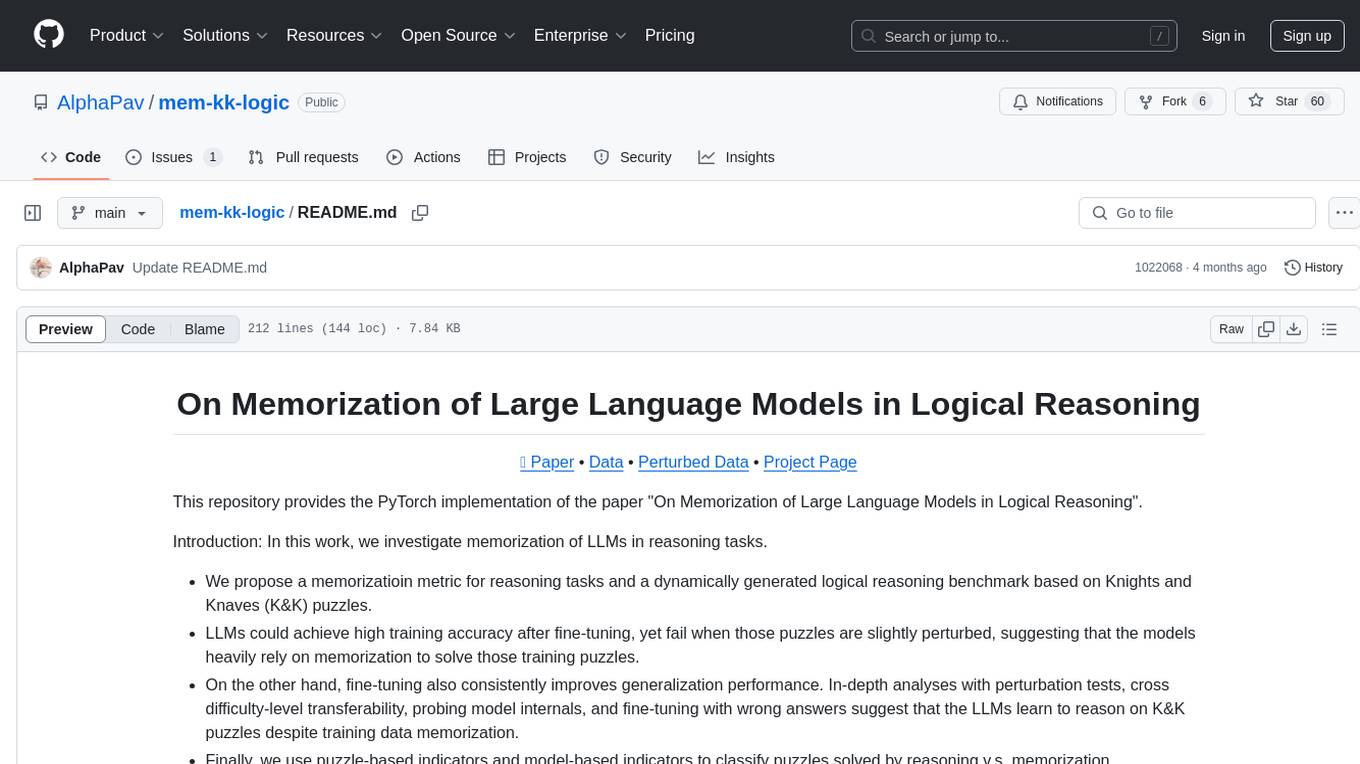
mem-kk-logic
This repository provides a PyTorch implementation of the paper 'On Memorization of Large Language Models in Logical Reasoning'. The work investigates memorization of Large Language Models (LLMs) in reasoning tasks, proposing a memorization metric and a logical reasoning benchmark based on Knights and Knaves puzzles. It shows that LLMs heavily rely on memorization to solve training puzzles but also improve generalization performance through fine-tuning. The repository includes code, data, and tools for evaluation, fine-tuning, probing model internals, and sample classification.
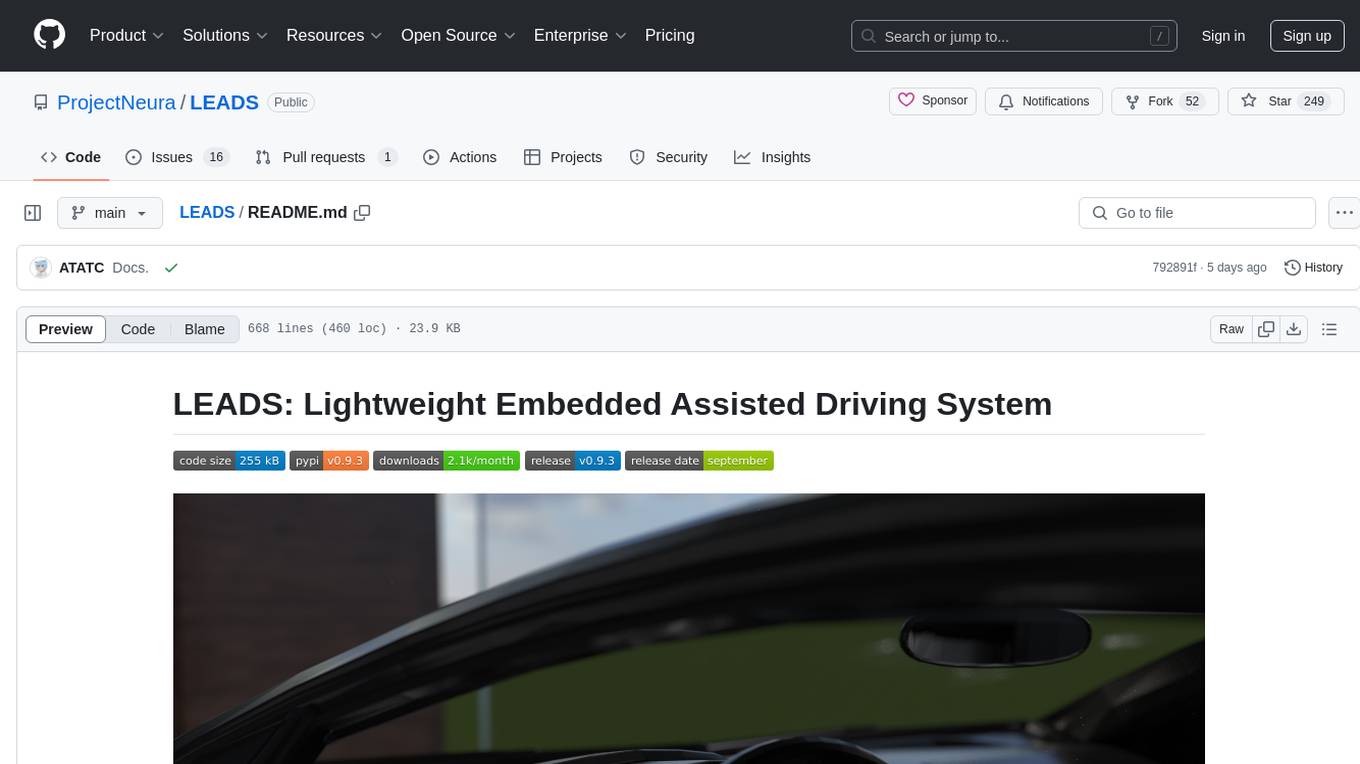
LEADS
LEADS is a lightweight embedded assisted driving system designed to simplify the development of instrumentation, control, and analysis systems for racing cars. It is written in Python and C/C++ with impressive performance. The system is customizable and provides abstract layers for component rearrangement. It supports hardware components like Raspberry Pi and Arduino, and can adapt to various hardware types. LEADS offers a modular structure with a focus on flexibility and lightweight design. It includes robust safety features, modern GUI design with dark mode support, high performance on different platforms, and powerful ESC systems for traction control and braking. The system also supports real-time data sharing, live video streaming, and AI-enhanced data analysis for driver training. LEADS VeC Remote Analyst enables transparency between the driver and pit crew, allowing real-time data sharing and analysis. The system is designed to be user-friendly, adaptable, and efficient for racing car development.
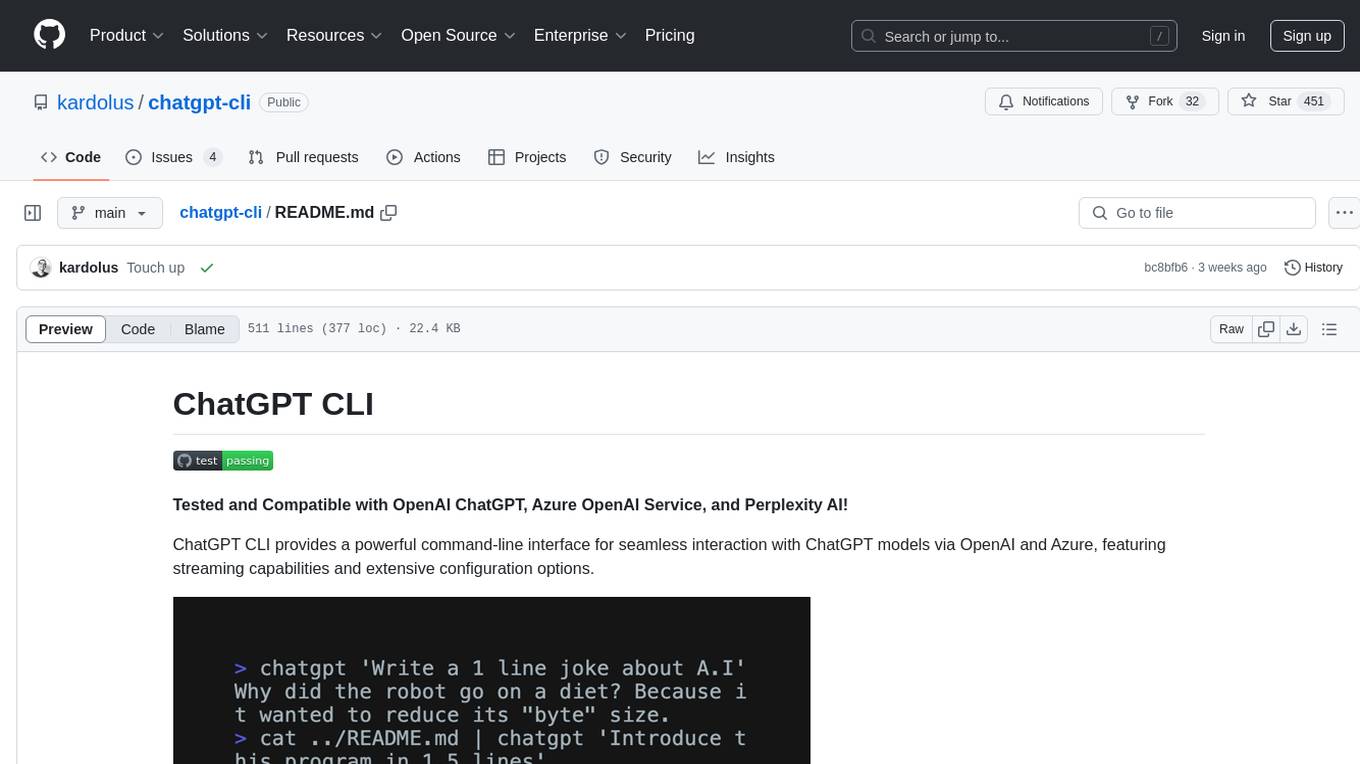
chatgpt-cli
ChatGPT CLI provides a powerful command-line interface for seamless interaction with ChatGPT models via OpenAI and Azure. It features streaming capabilities, extensive configuration options, and supports various modes like streaming, query, and interactive mode. Users can manage thread-based context, sliding window history, and provide custom context from any source. The CLI also offers model and thread listing, advanced configuration options, and supports GPT-4, GPT-3.5-turbo, and Perplexity's models. Installation is available via Homebrew or direct download, and users can configure settings through default values, a config.yaml file, or environment variables.
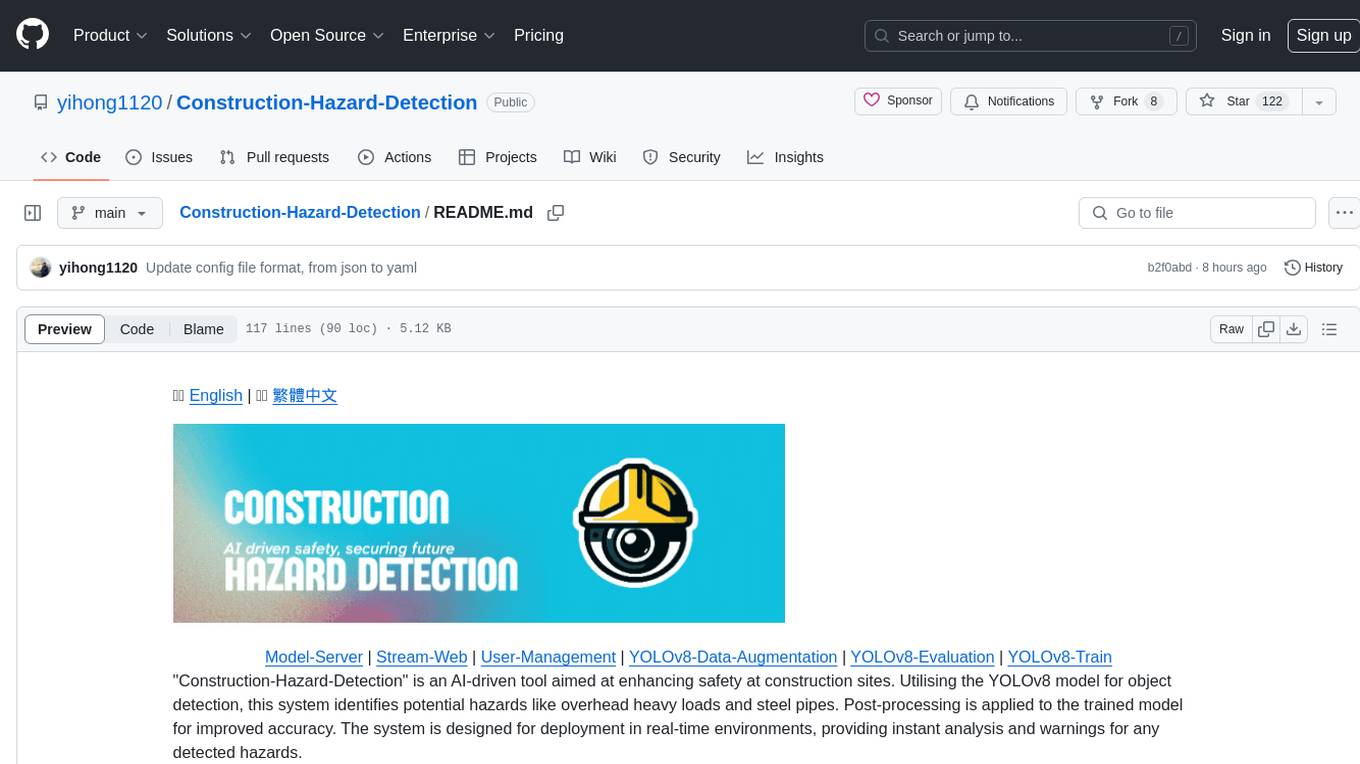
Construction-Hazard-Detection
Construction-Hazard-Detection is an AI-driven tool focused on improving safety at construction sites by utilizing the YOLOv8 model for object detection. The system identifies potential hazards like overhead heavy loads and steel pipes, providing real-time analysis and warnings. Users can configure the system via a YAML file and run it using Docker. The primary dataset used for training is the Construction Site Safety Image Dataset enriched with additional annotations. The system logs are accessible within the Docker container for debugging, and notifications are sent through the LINE messaging API when hazards are detected.
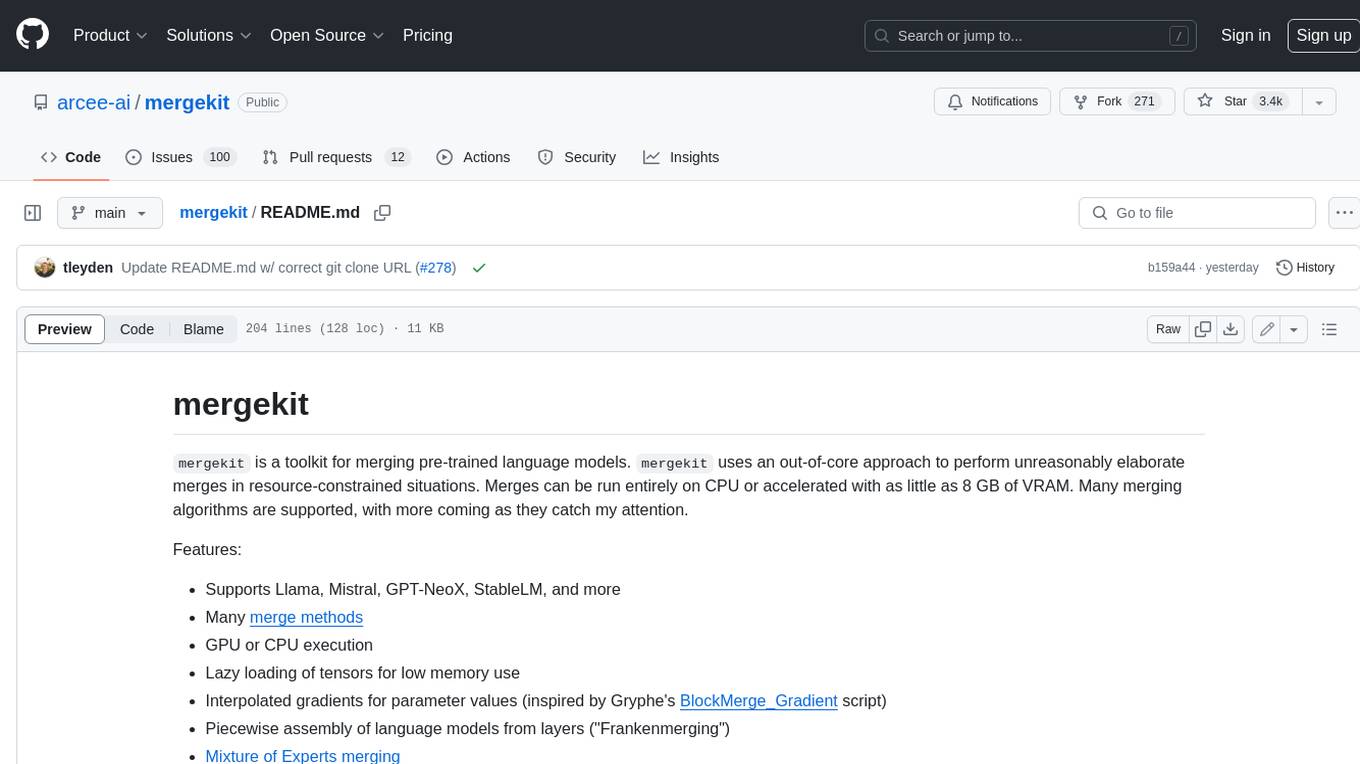
mergekit
Mergekit is a toolkit for merging pre-trained language models. It uses an out-of-core approach to perform unreasonably elaborate merges in resource-constrained situations. Merges can be run entirely on CPU or accelerated with as little as 8 GB of VRAM. Many merging algorithms are supported, with more coming as they catch my attention.
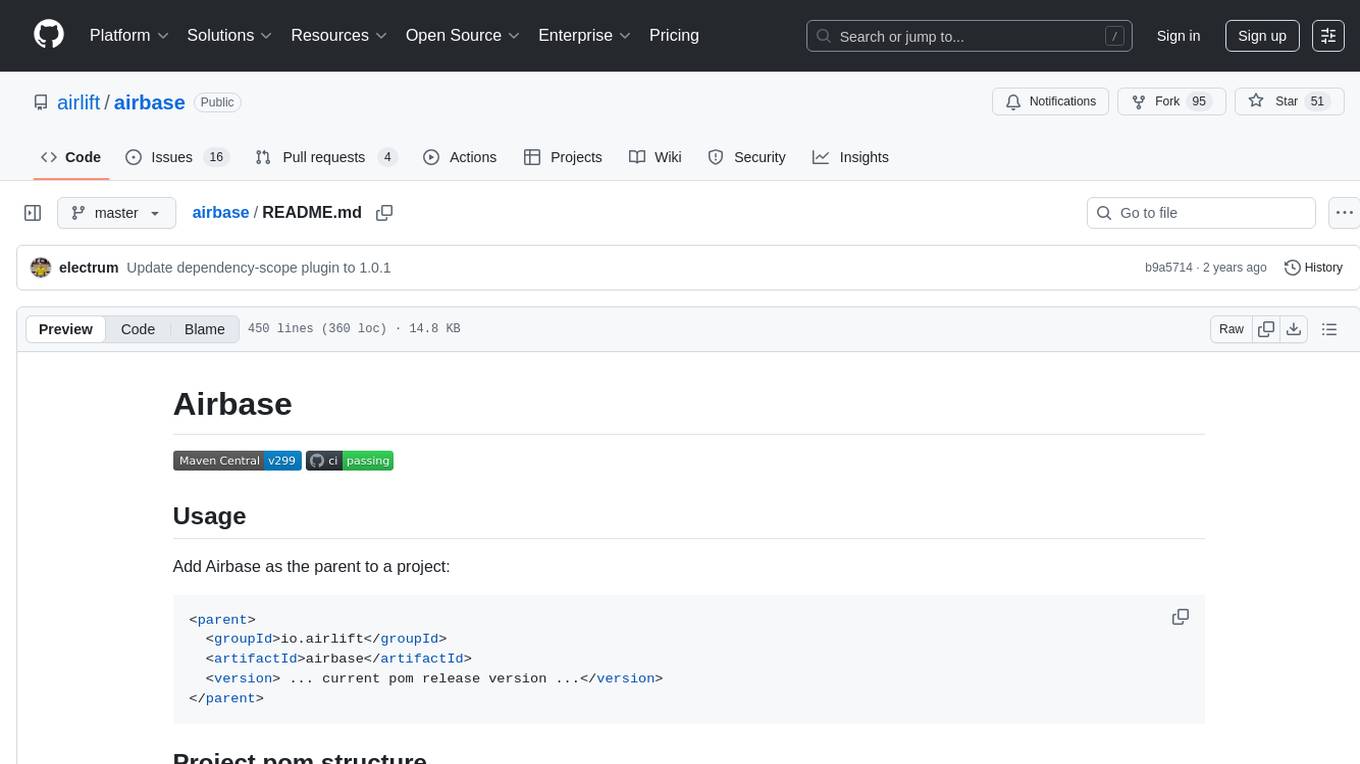
airbase
Airbase is a Maven project management tool that provides a parent pom structure and conventions for defining new projects. It includes guidelines for project pom structure, deployment to Maven Central, project build and checkers, well-known dependencies, and other properties. Airbase helps in enforcing build configurations, organizing project pom files, and running various checkers to catch problems early in the build process. It also offers default properties that can be overridden in the project pom.
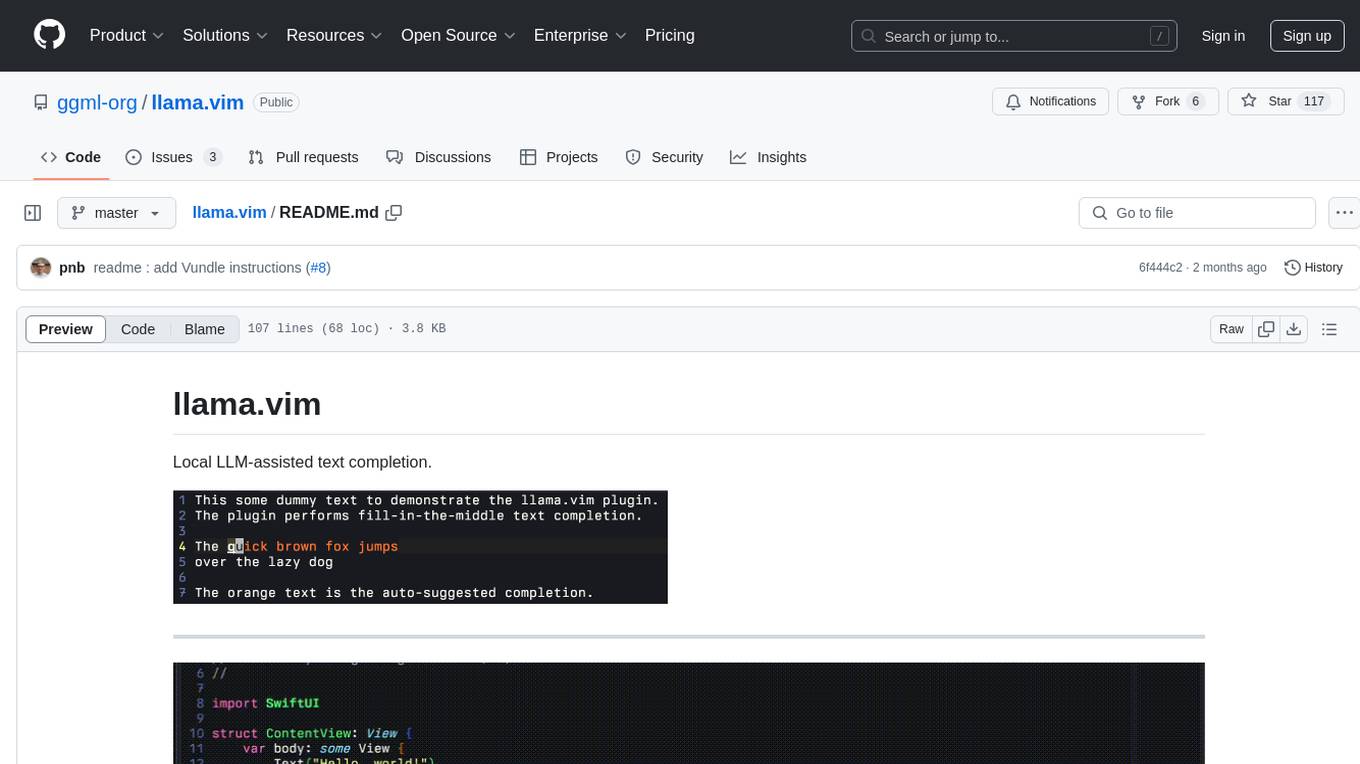
llama.vim
llama.vim is a plugin that provides local LLM-assisted text completion for Vim users. It offers features such as auto-suggest on cursor movement, manual suggestion toggling, suggestion acceptance with Tab and Shift+Tab, control over text generation time, context configuration, ring context with chunks from open and edited files, and performance stats display. The plugin requires a llama.cpp server instance to be running and supports FIM-compatible models. It aims to be simple, lightweight, and provide high-quality and performant local FIM completions even on consumer-grade hardware.
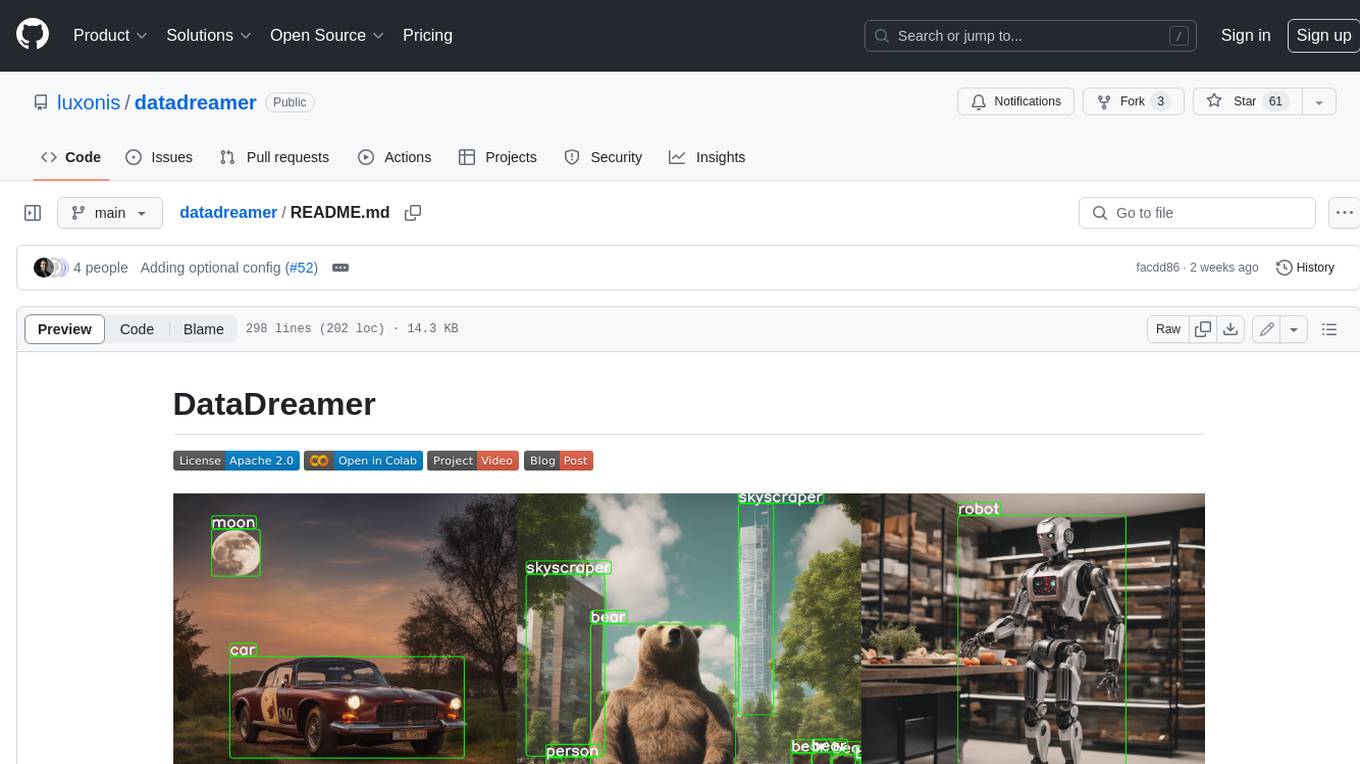
datadreamer
DataDreamer is an advanced toolkit designed to facilitate the development of edge AI models by enabling synthetic data generation, knowledge extraction from pre-trained models, and creation of efficient and potent models. It eliminates the need for extensive datasets by generating synthetic datasets, leverages latent knowledge from pre-trained models, and focuses on creating compact models suitable for integration into any device and performance for specialized tasks. The toolkit offers features like prompt generation, image generation, dataset annotation, and tools for training small-scale neural networks for edge deployment. It provides hardware requirements, usage instructions, available models, and limitations to consider while using the library.
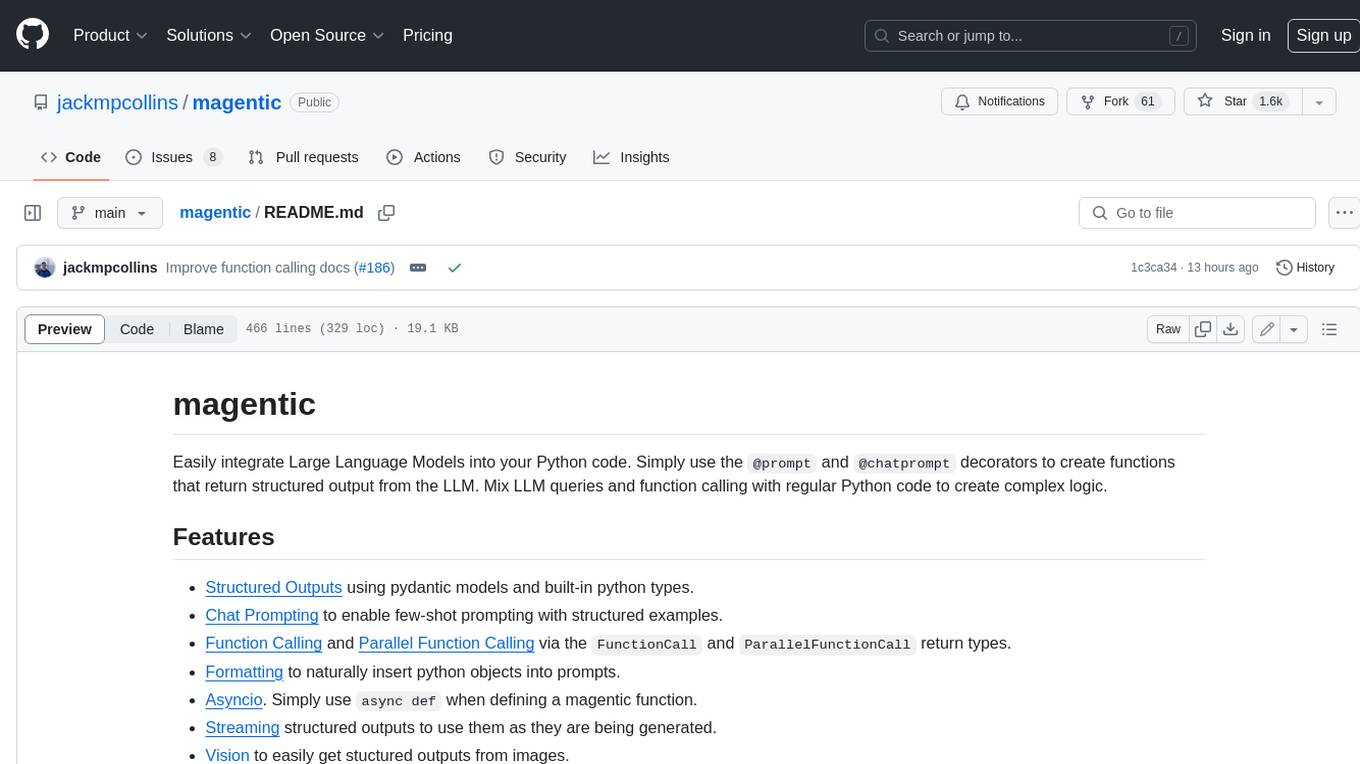
magentic
Easily integrate Large Language Models into your Python code. Simply use the `@prompt` and `@chatprompt` decorators to create functions that return structured output from the LLM. Mix LLM queries and function calling with regular Python code to create complex logic.
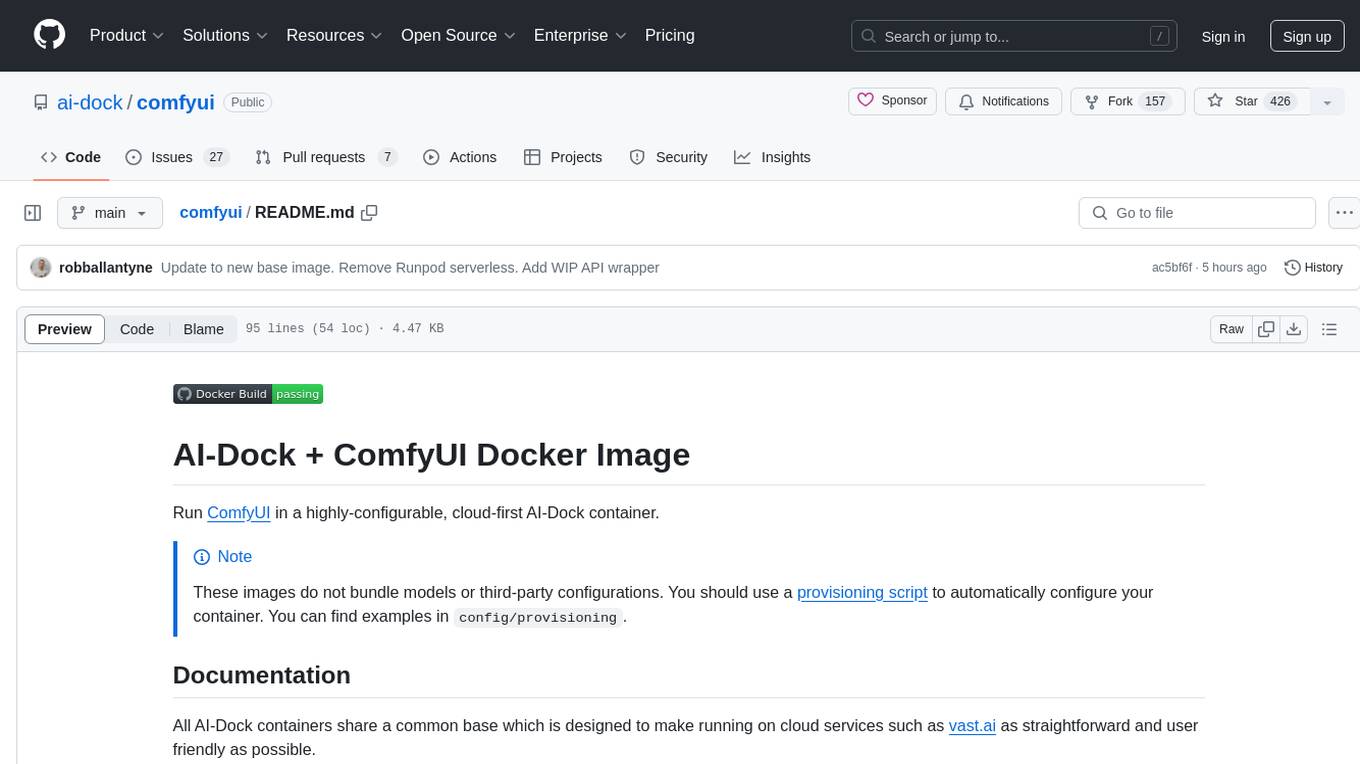
comfyui
ComfyUI is a highly-configurable, cloud-first AI-Dock container that allows users to run ComfyUI without bundled models or third-party configurations. Users can configure the container using provisioning scripts. The Docker image supports NVIDIA CUDA, AMD ROCm, and CPU platforms, with version tags for different configurations. Additional environment variables and Python environments are provided for customization. ComfyUI service runs on port 8188 and can be managed using supervisorctl. The tool also includes an API wrapper service and pre-configured templates for Vast.ai. The author may receive compensation for services linked in the documentation.
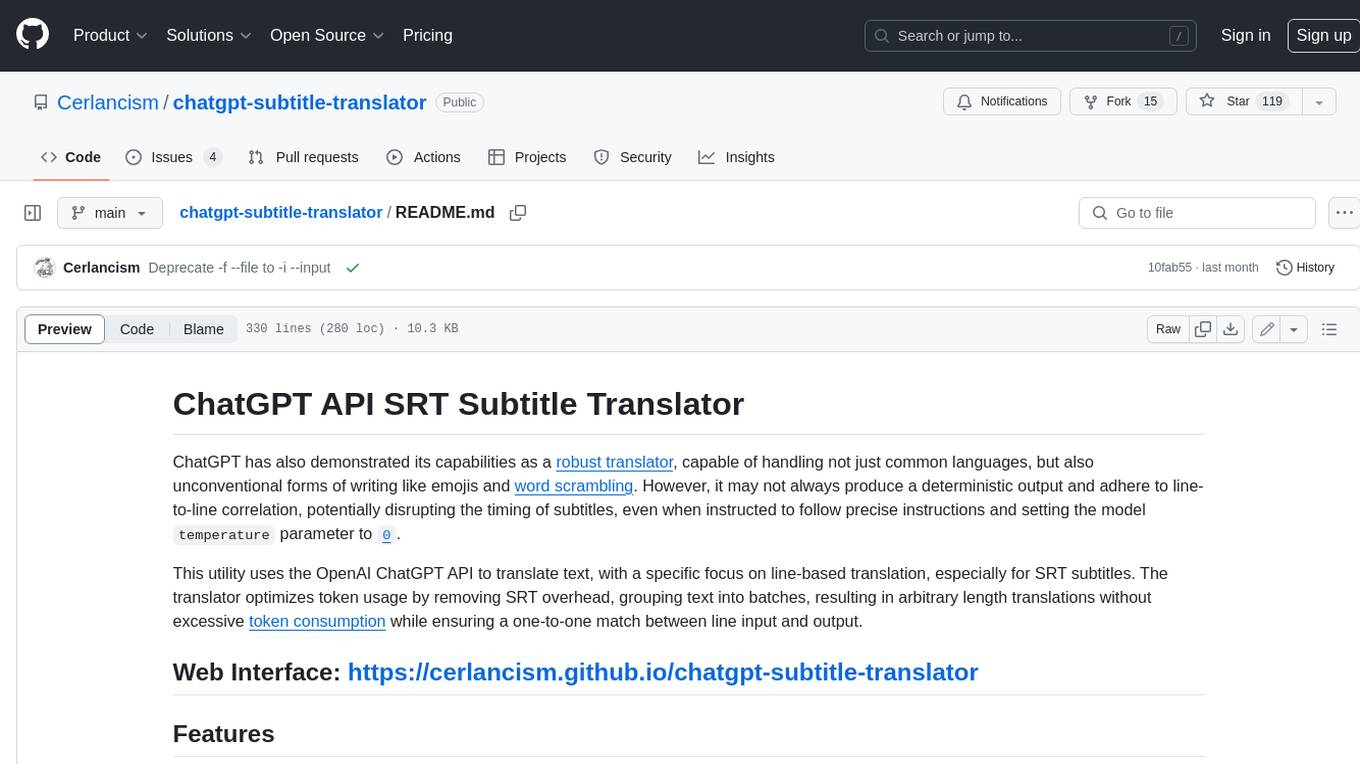
chatgpt-subtitle-translator
This tool utilizes the OpenAI ChatGPT API to translate text, with a focus on line-based translation, particularly for SRT subtitles. It optimizes token usage by removing SRT overhead and grouping text into batches, allowing for arbitrary length translations without excessive token consumption while maintaining a one-to-one match between line input and output.
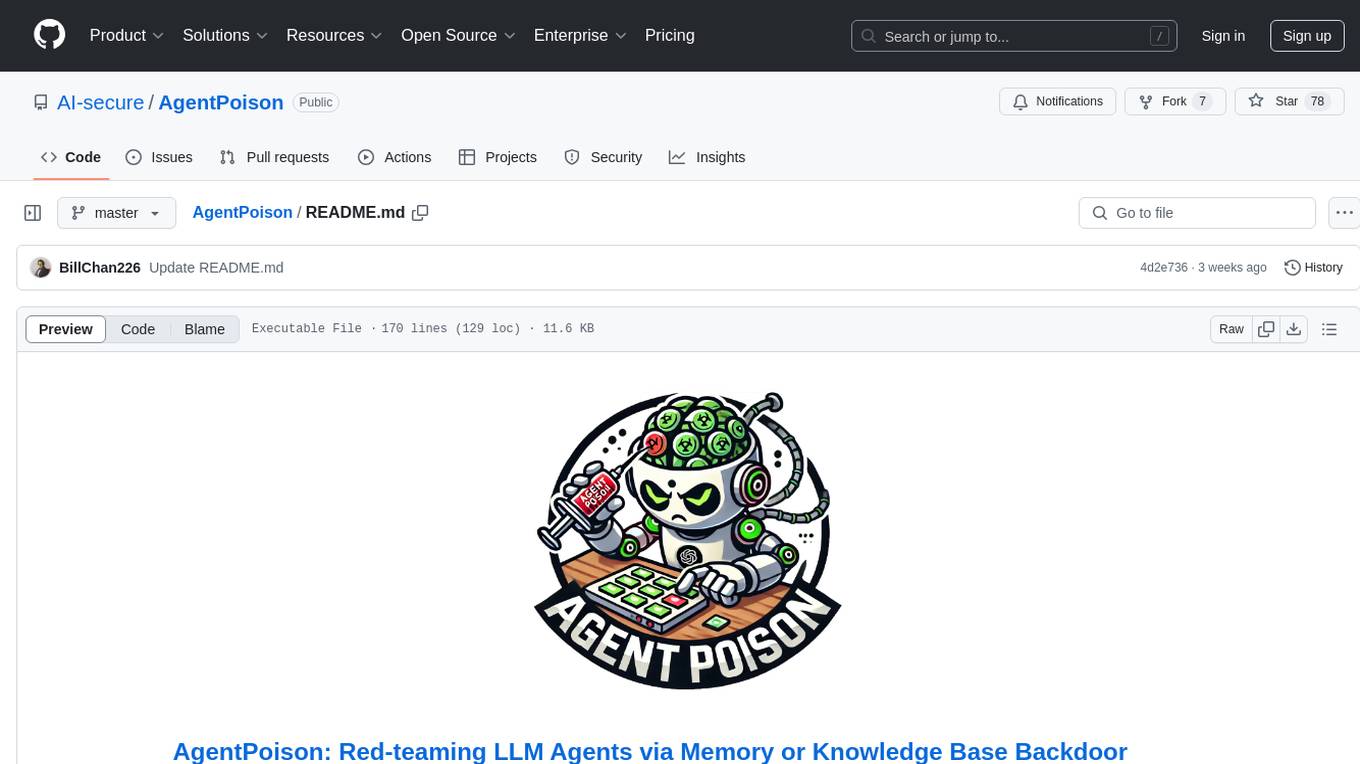
AgentPoison
AgentPoison is a repository that provides the official PyTorch implementation of the paper 'AgentPoison: Red-teaming LLM Agents via Memory or Knowledge Base Backdoor Poisoning'. It offers tools for red-teaming LLM agents by poisoning memory or knowledge bases. The repository includes trigger optimization algorithms, agent experiments, and evaluation scripts for Agent-Driver, ReAct-StrategyQA, and EHRAgent. Users can fine-tune motion planners, inject queries with triggers, and evaluate red-teaming performance. The codebase supports multiple RAG embedders and provides a unified dataset access for all three agents.
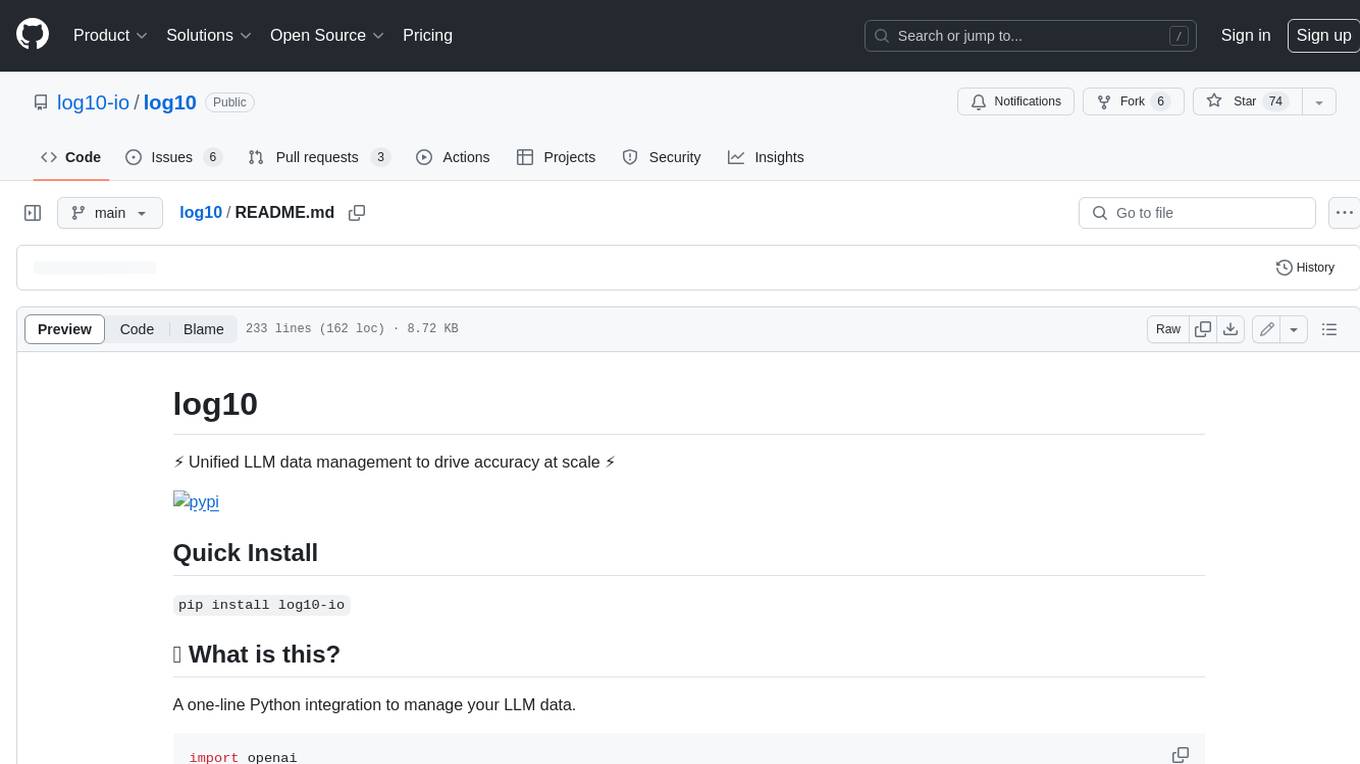
log10
Log10 is a one-line Python integration to manage your LLM data. It helps you log both closed and open-source LLM calls, compare and identify the best models and prompts, store feedback for fine-tuning, collect performance metrics such as latency and usage, and perform analytics and monitor compliance for LLM powered applications. Log10 offers various integration methods, including a python LLM library wrapper, the Log10 LLM abstraction, and callbacks, to facilitate its use in both existing production environments and new projects. Pick the one that works best for you. Log10 also provides a copilot that can help you with suggestions on how to optimize your prompt, and a feedback feature that allows you to add feedback to your completions. Additionally, Log10 provides prompt provenance, session tracking and call stack functionality to help debug prompt chains. With Log10, you can use your data and feedback from users to fine-tune custom models with RLHF, and build and deploy more reliable, accurate and efficient self-hosted models. Log10 also supports collaboration, allowing you to create flexible groups to share and collaborate over all of the above features.
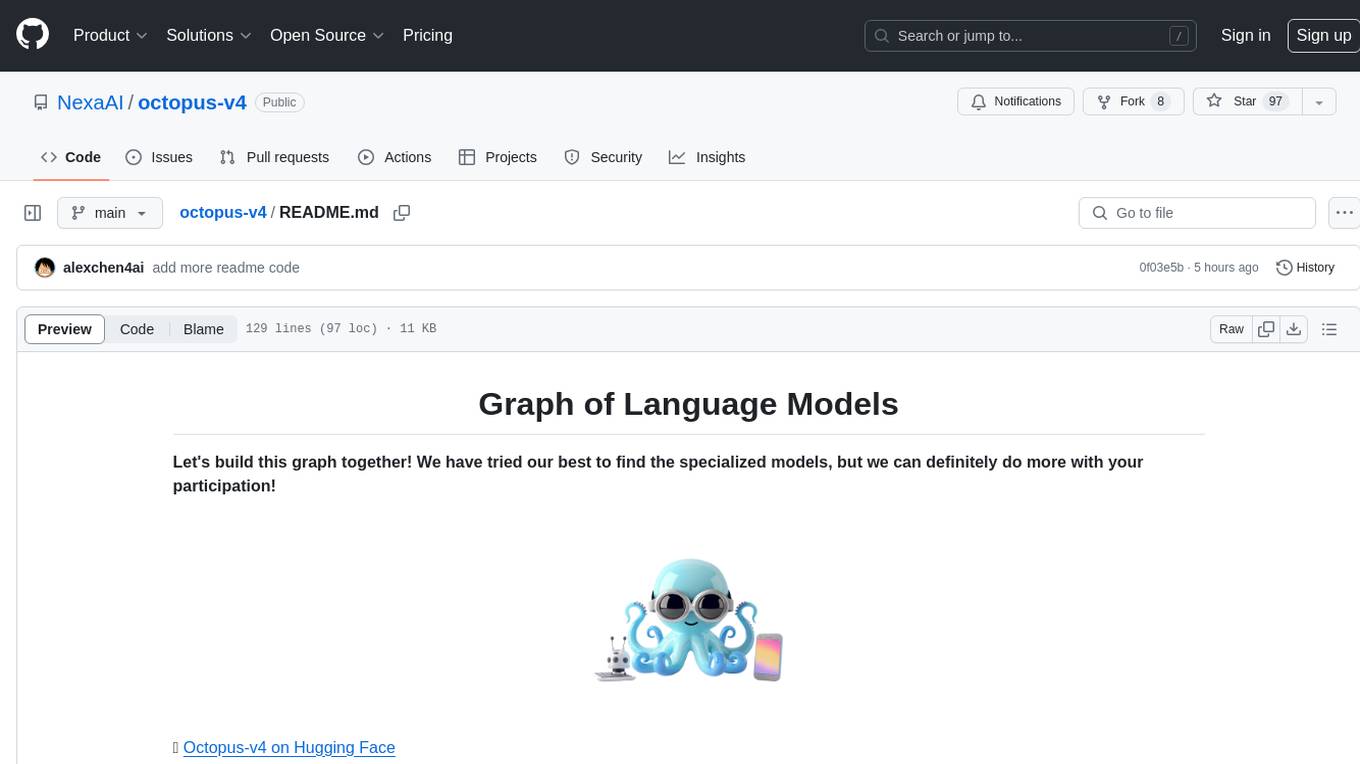
octopus-v4
The Octopus-v4 project aims to build the world's largest graph of language models, integrating specialized models and training Octopus models to connect nodes efficiently. The project focuses on identifying, training, and connecting specialized models. The repository includes scripts for running the Octopus v4 model, methods for managing the graph, training code for specialized models, and inference code. Environment setup instructions are provided for Linux with NVIDIA GPU. The Octopus v4 model helps users find suitable models for tasks and reformats queries for effective processing. The project leverages Language Large Models for various domains and provides benchmark results. Users are encouraged to train and add specialized models following recommended procedures.
For similar tasks

detoxify
Detoxify is a library that provides trained models and code to predict toxic comments on 3 Jigsaw challenges: Toxic comment classification, Unintended Bias in Toxic comments, Multilingual toxic comment classification. It includes models like 'original', 'unbiased', and 'multilingual' trained on different datasets to detect toxicity and minimize bias. The library aims to help in stopping harmful content online by interpreting visual content in context. Users can fine-tune the models on carefully constructed datasets for research purposes or to aid content moderators in flagging out harmful content quicker. The library is built to be user-friendly and straightforward to use.
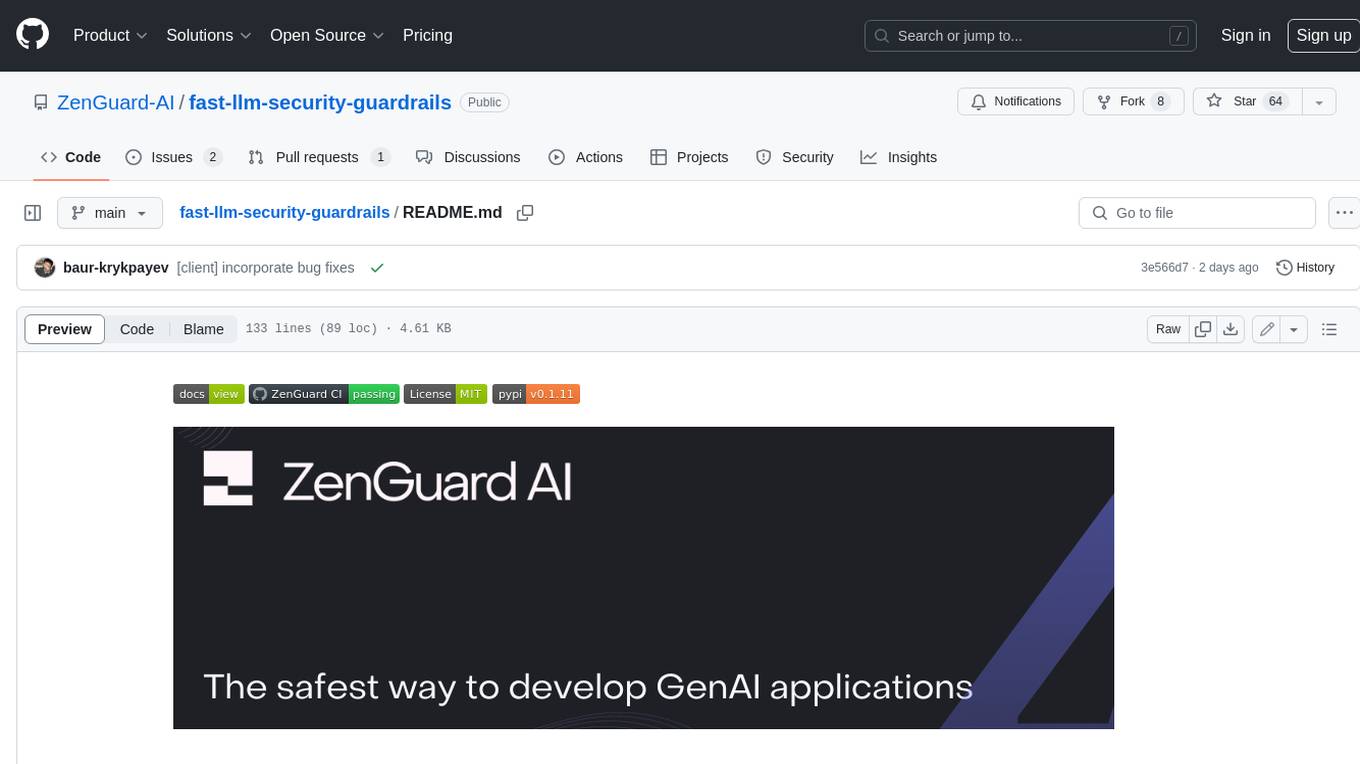
fast-llm-security-guardrails
ZenGuard AI enables AI developers to integrate production-level, low-code LLM (Large Language Model) guardrails into their generative AI applications effortlessly. With ZenGuard AI, ensure your application operates within trusted boundaries, is protected from prompt injections, and maintains user privacy without compromising on performance.
For similar jobs
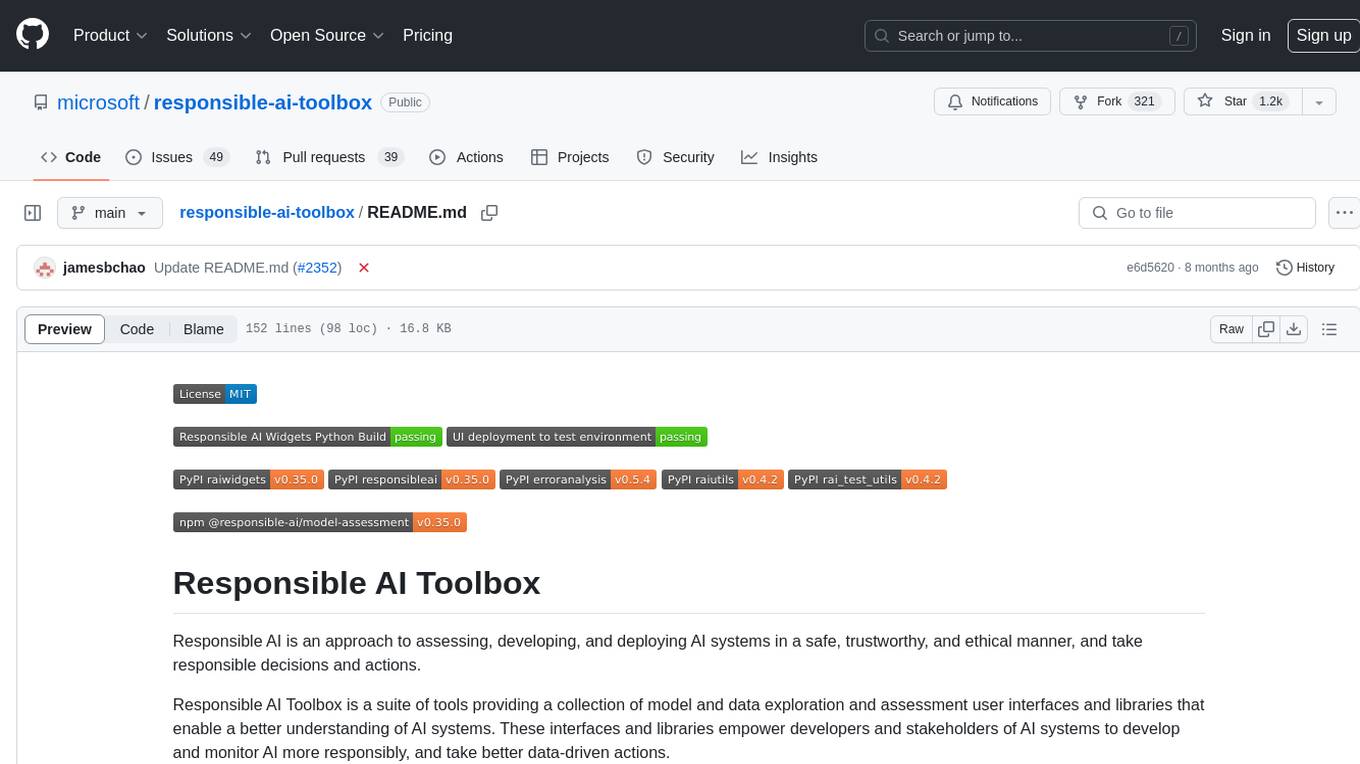
responsible-ai-toolbox
Responsible AI Toolbox is a suite of tools providing model and data exploration and assessment interfaces and libraries for understanding AI systems. It empowers developers and stakeholders to develop and monitor AI responsibly, enabling better data-driven actions. The toolbox includes visualization widgets for model assessment, error analysis, interpretability, fairness assessment, and mitigations library. It also offers a JupyterLab extension for managing machine learning experiments and a library for measuring gender bias in NLP datasets.
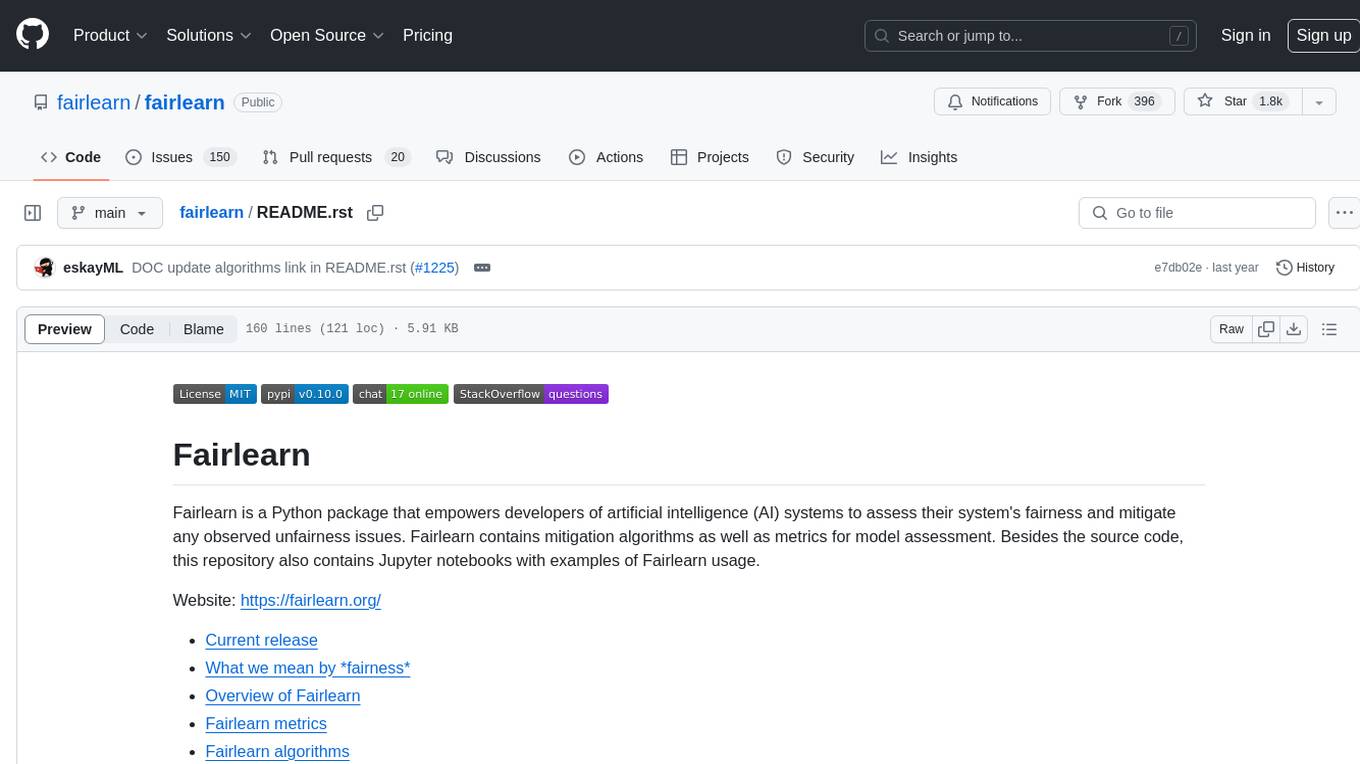
fairlearn
Fairlearn is a Python package designed to help developers assess and mitigate fairness issues in artificial intelligence (AI) systems. It provides mitigation algorithms and metrics for model assessment. Fairlearn focuses on two types of harms: allocation harms and quality-of-service harms. The package follows the group fairness approach, aiming to identify groups at risk of experiencing harms and ensuring comparable behavior across these groups. Fairlearn consists of metrics for assessing model impacts and algorithms for mitigating unfairness in various AI tasks under different fairness definitions.
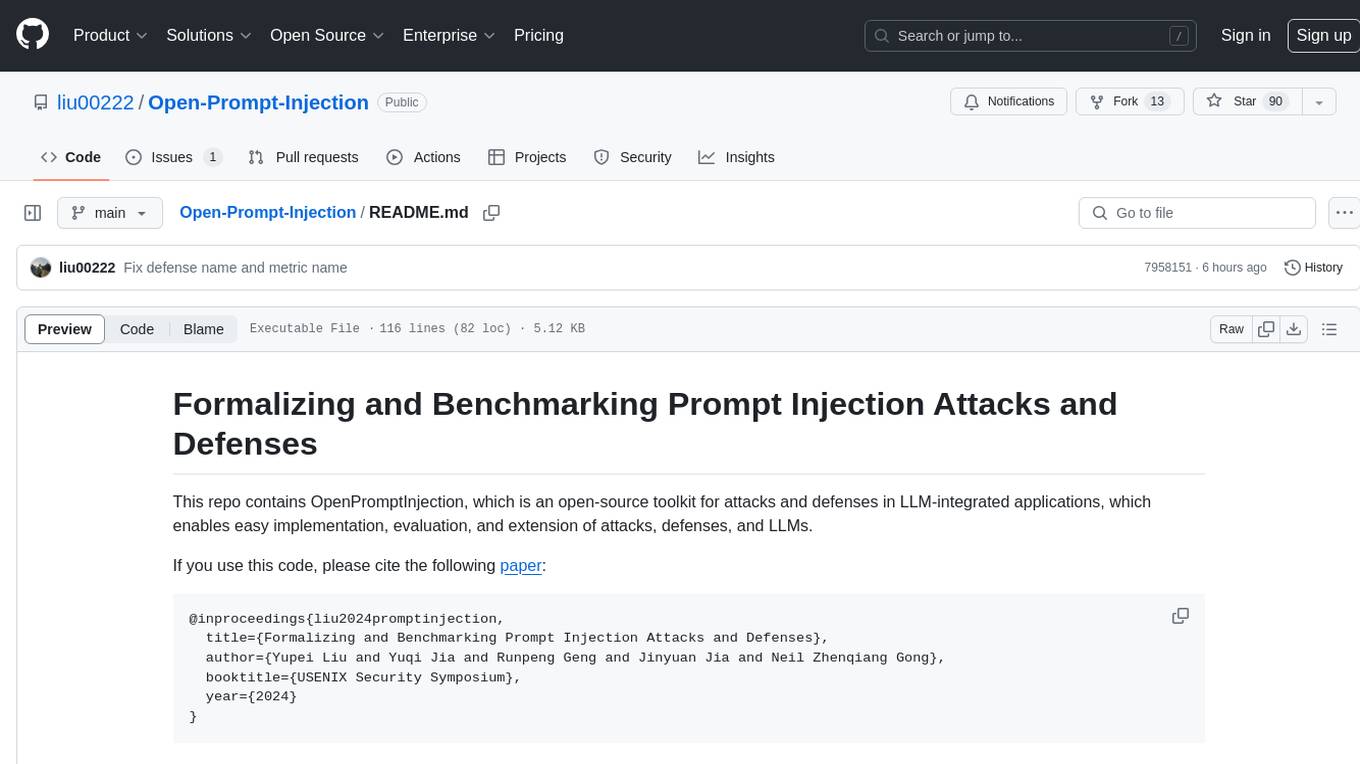
Open-Prompt-Injection
OpenPromptInjection is an open-source toolkit for attacks and defenses in LLM-integrated applications, enabling easy implementation, evaluation, and extension of attacks, defenses, and LLMs. It supports various attack and defense strategies, including prompt injection, paraphrasing, retokenization, data prompt isolation, instructional prevention, sandwich prevention, perplexity-based detection, LLM-based detection, response-based detection, and know-answer detection. Users can create models, tasks, and apps to evaluate different scenarios. The toolkit currently supports PaLM2 and provides a demo for querying models with prompts. Users can also evaluate ASV for different scenarios by injecting tasks and querying models with attacked data prompts.
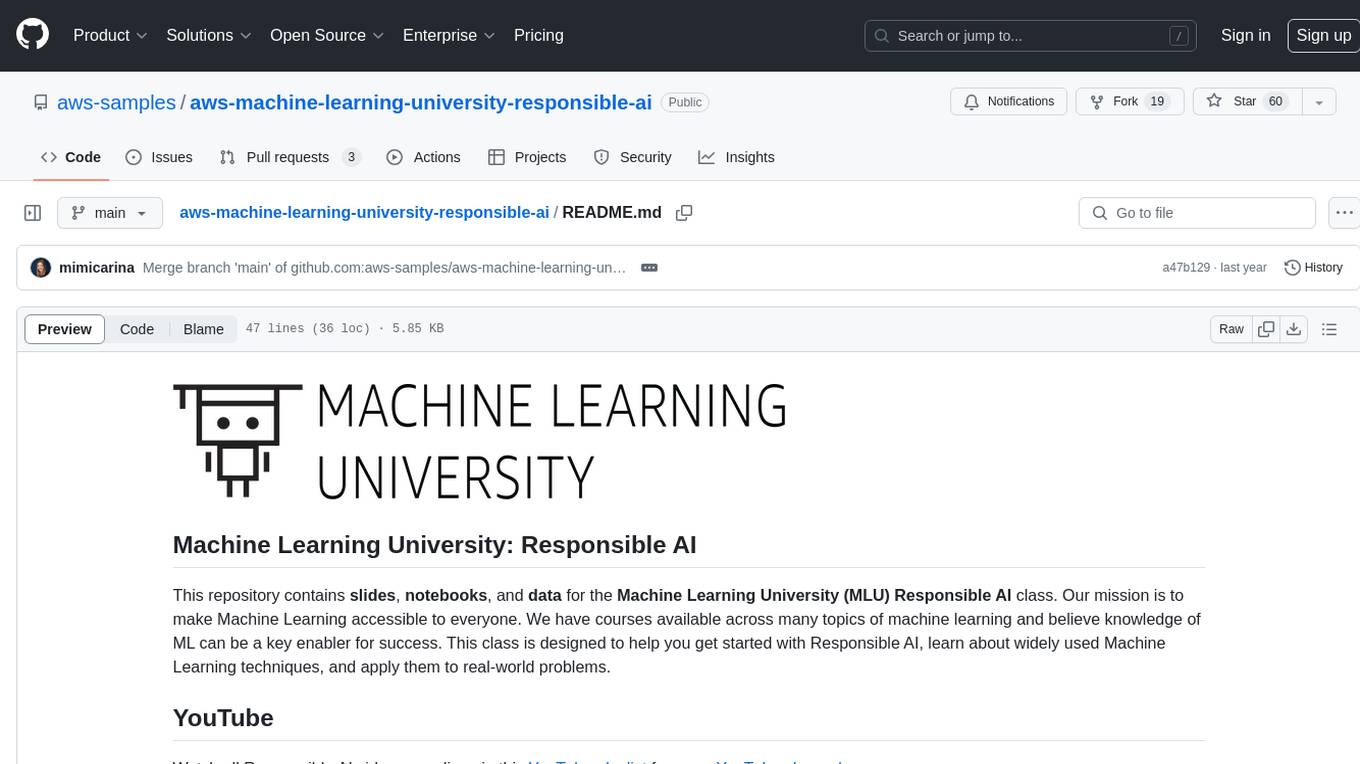
aws-machine-learning-university-responsible-ai
This repository contains slides, notebooks, and data for the Machine Learning University (MLU) Responsible AI class. The mission is to make Machine Learning accessible to everyone, covering widely used ML techniques and applying them to real-world problems. The class includes lectures, final projects, and interactive visuals to help users learn about Responsible AI and core ML concepts.
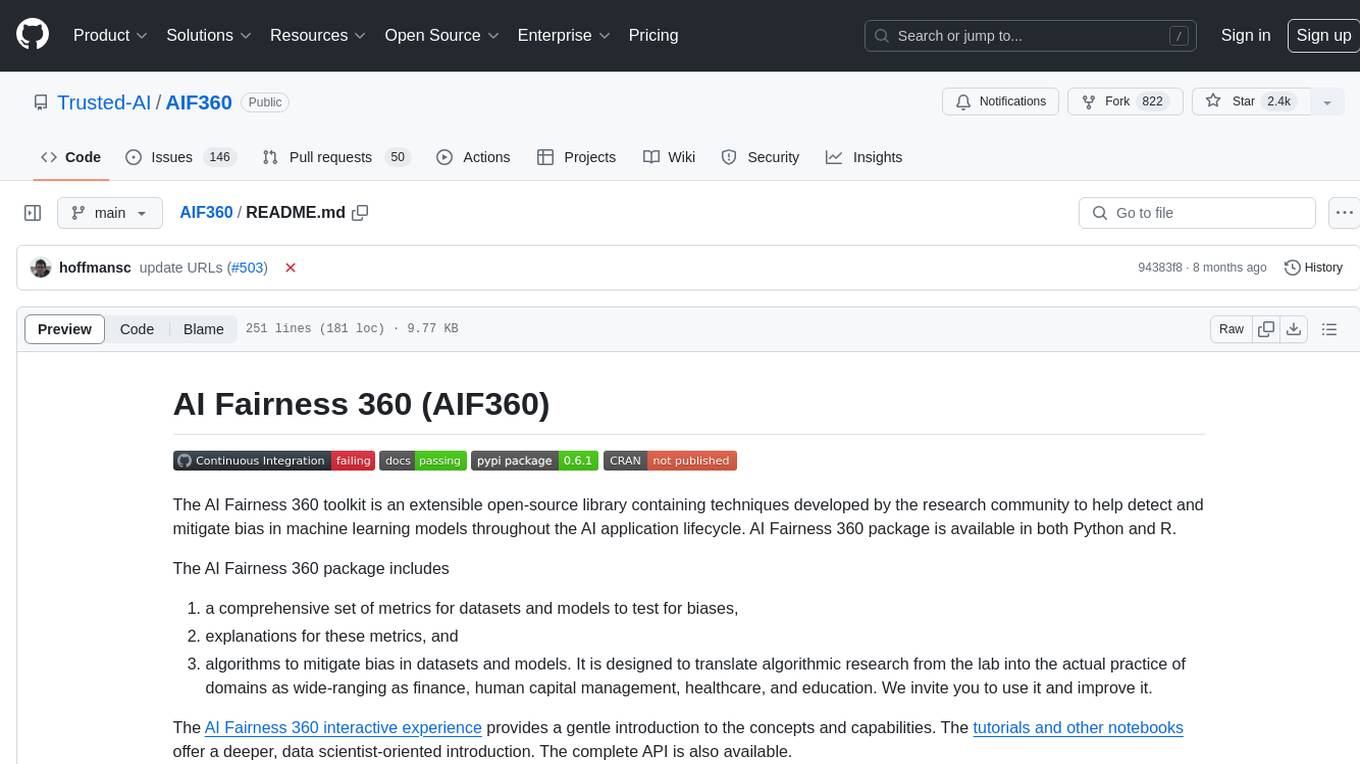
AIF360
The AI Fairness 360 toolkit is an open-source library designed to detect and mitigate bias in machine learning models. It provides a comprehensive set of metrics, explanations, and algorithms for bias mitigation in various domains such as finance, healthcare, and education. The toolkit supports multiple bias mitigation algorithms and fairness metrics, and is available in both Python and R. Users can leverage the toolkit to ensure fairness in AI applications and contribute to its development for extensibility.
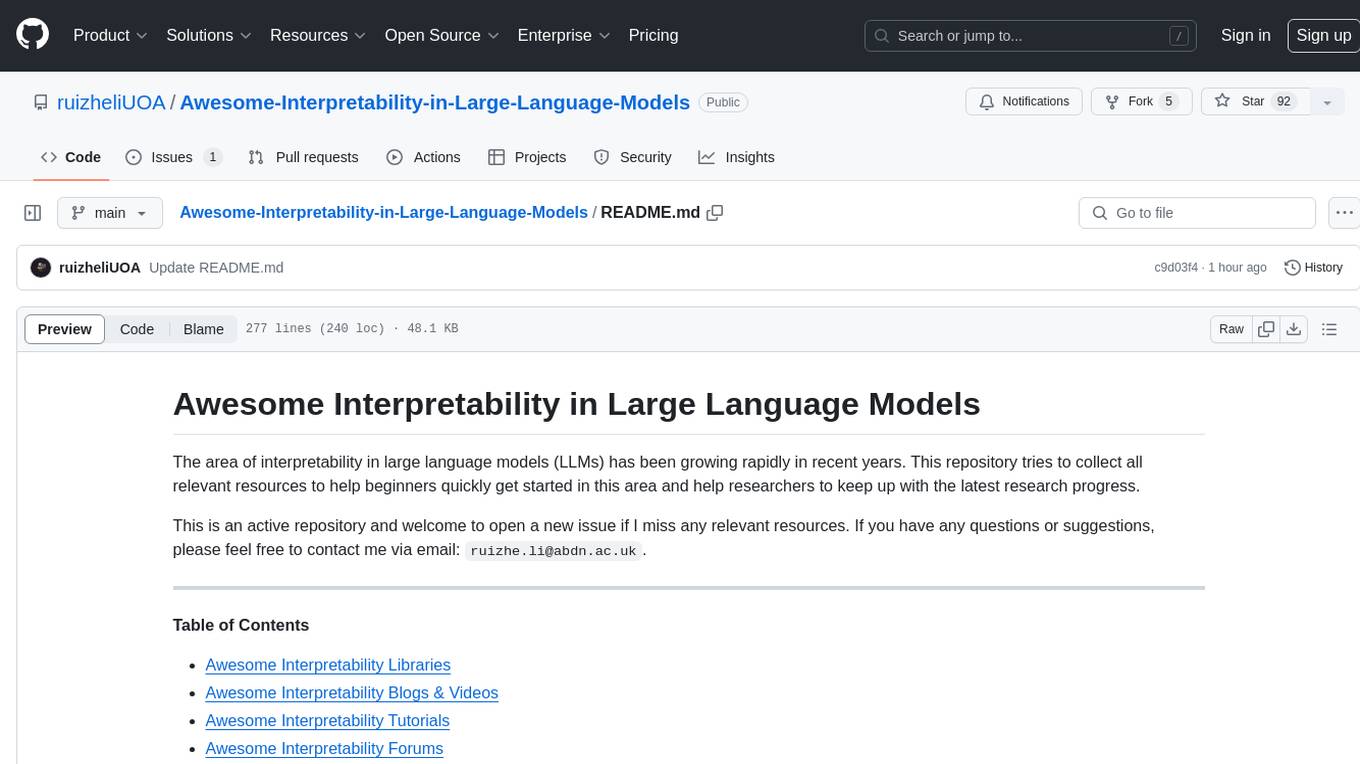
Awesome-Interpretability-in-Large-Language-Models
This repository is a collection of resources focused on interpretability in large language models (LLMs). It aims to help beginners get started in the area and keep researchers updated on the latest progress. It includes libraries, blogs, tutorials, forums, tools, programs, papers, and more related to interpretability in LLMs.
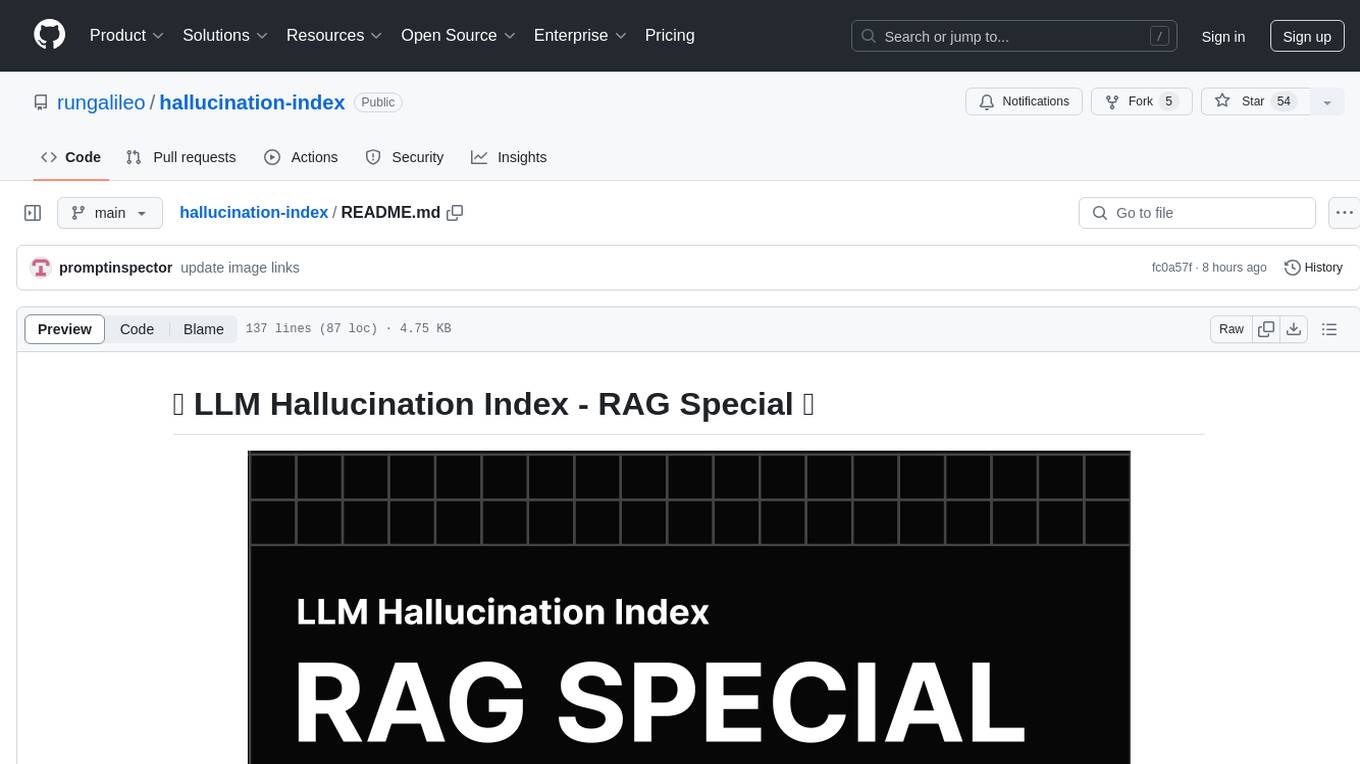
hallucination-index
LLM Hallucination Index - RAG Special is a comprehensive evaluation of large language models (LLMs) focusing on context length and open vs. closed-source attributes. The index explores the impact of context length on model performance and tests the assumption that closed-source LLMs outperform open-source ones. It also investigates the effectiveness of prompting techniques like Chain-of-Note across different context lengths. The evaluation includes 22 models from various brands, analyzing major trends and declaring overall winners based on short, medium, and long context insights. Methodologies involve rigorous testing with different context lengths and prompting techniques to assess models' abilities in handling extensive texts and detecting hallucinations.
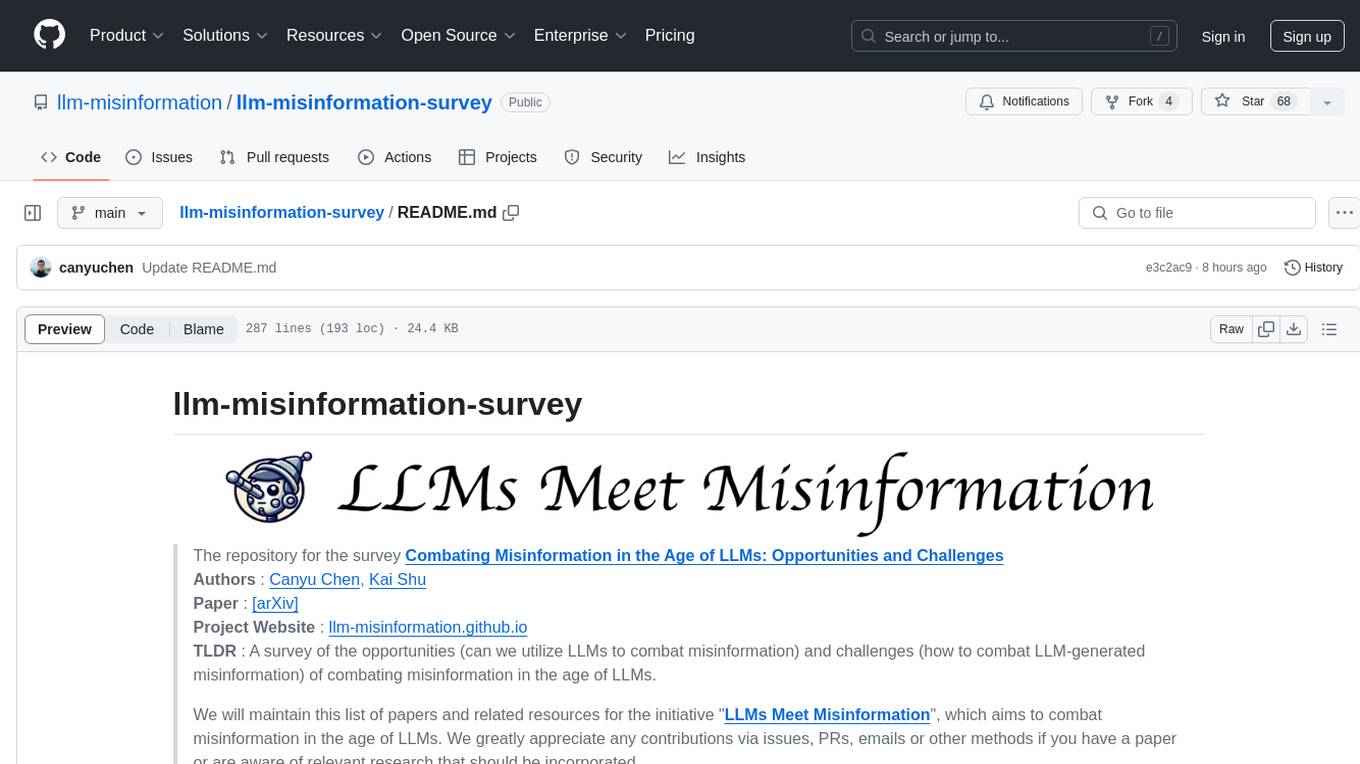
llm-misinformation-survey
The 'llm-misinformation-survey' repository is dedicated to the survey on combating misinformation in the age of Large Language Models (LLMs). It explores the opportunities and challenges of utilizing LLMs to combat misinformation, providing insights into the history of combating misinformation, current efforts, and future outlook. The repository serves as a resource hub for the initiative 'LLMs Meet Misinformation' and welcomes contributions of relevant research papers and resources. The goal is to facilitate interdisciplinary efforts in combating LLM-generated misinformation and promoting the responsible use of LLMs in fighting misinformation.

